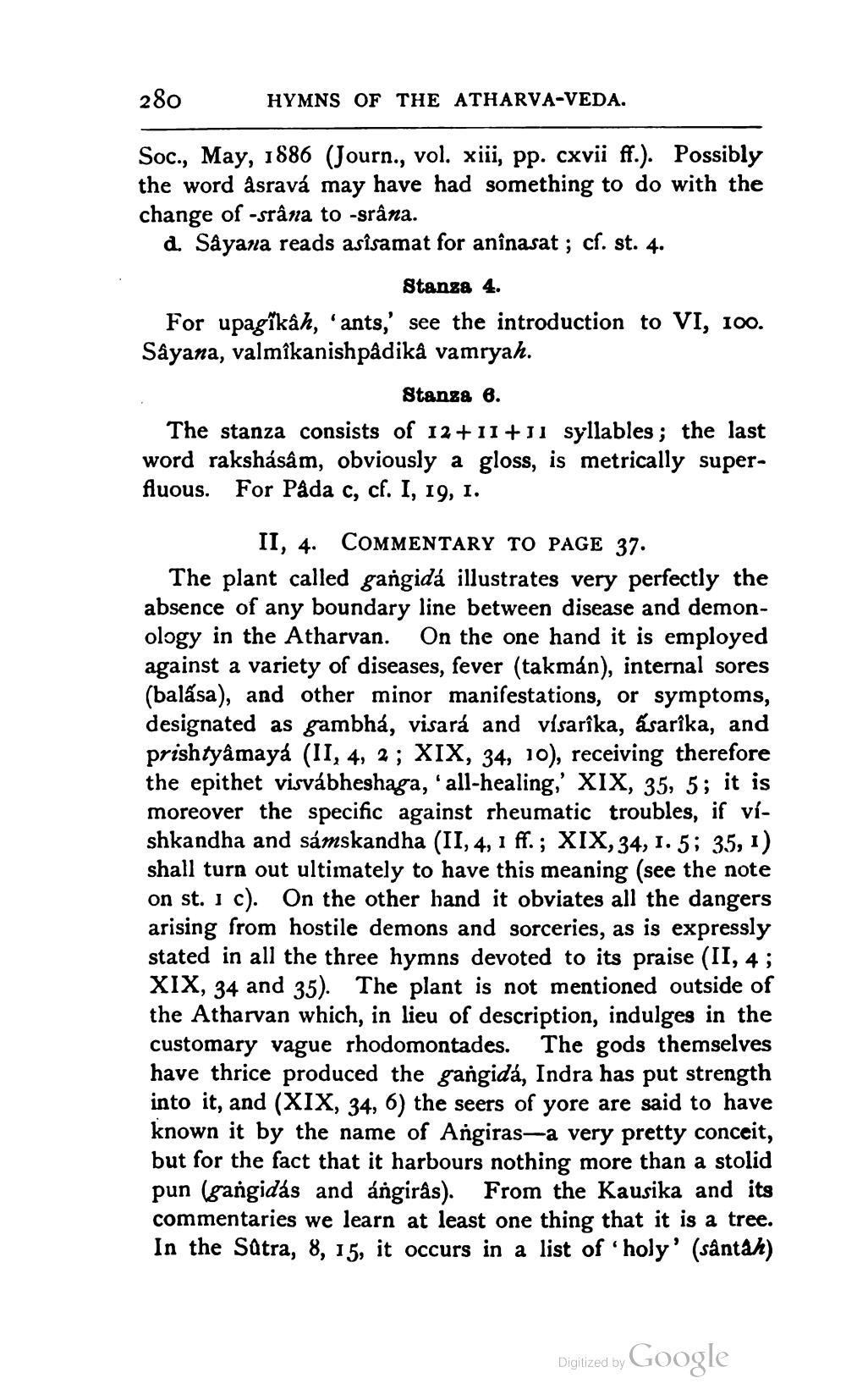________________
280
HYMNS OF THE ATHARVA-VEDA.
Soc., May, 1886 (Journ., vol. xiii, pp. cxvii ff.). Possibly the word asravá may have had something to do with the change of -srâna to -srâna. d. Sayana reads asîsamat for anînasat ; cf. st. 4.
Stanza 4. For upagîkah, "ants,' see the introduction to VI, 100. Sayana, valmîkanishpadikå vamryah.
Stanza 6.
The stanza consists of 12 +11+31 syllables; the last word rakshásâm, obviously a gloss, is metrically superfluous. For Påda c, cf. I, 19, 1.
II, 4. COMMENTARY TO PAGE 37. The plant called gangidá illustrates very perfectly the absence of any boundary line between disease and demonology in the Atharvan. On the one hand it is employed against a variety of diseases, fever (takmán), internal sores (balása), and other minor manifestations, or symptoms, designated as gambhá, visará and vísarîka, ásarika, and prishtyåmayá (11, 4, 2; XIX, 34, 10), receiving therefore the epithet visvábheshaga, 'all-healing,' XIX, 35, 5; it is moreover the specific against theumatic troubles, if víshkandha and sámskandha (II, 4, 1 ff.; XIX, 34, 1. 5; 35, 1) shall turn out ultimately to have this meaning (see the note on st. I c). On the other hand it obviates all the dangers arising from hostile demons and sorceries, as is expressly stated in all the three hymns devoted to its praise (II, 4; XIX, 34 and 35). The plant is not mentioned outside of the Atharvan which, in lieu of description, indulges in the customary vague rhodomontades. The gods themselves have thrice produced the gangida, Indra has put strength into it, and (XIX, 34, 6) the seers of yore are said to have known it by the name of Angiras-a very pretty conceit, but for the fact that it harbours nothing more than a stolid pun (gangidas and ángirâs). From the Kausika and its commentaries we learn at least one thing that it is a tree. In the Satra, 8, 15, it occurs in a list of "holy' (sântah)
Digized by Google




